|
Di seguito gli interventi pubblicati in questa sezione, in ordine cronologico.
One of the most common causes of erectile dysfunction is high cholesterol, which can clog blood vessels and weaken blood flow to the penis. Over time, it may also result in abnormal tissue build up, leading to permanent dysfunction.
But new findings published in the journal Clinical & Developmental Immunology explain how marijuana may help.
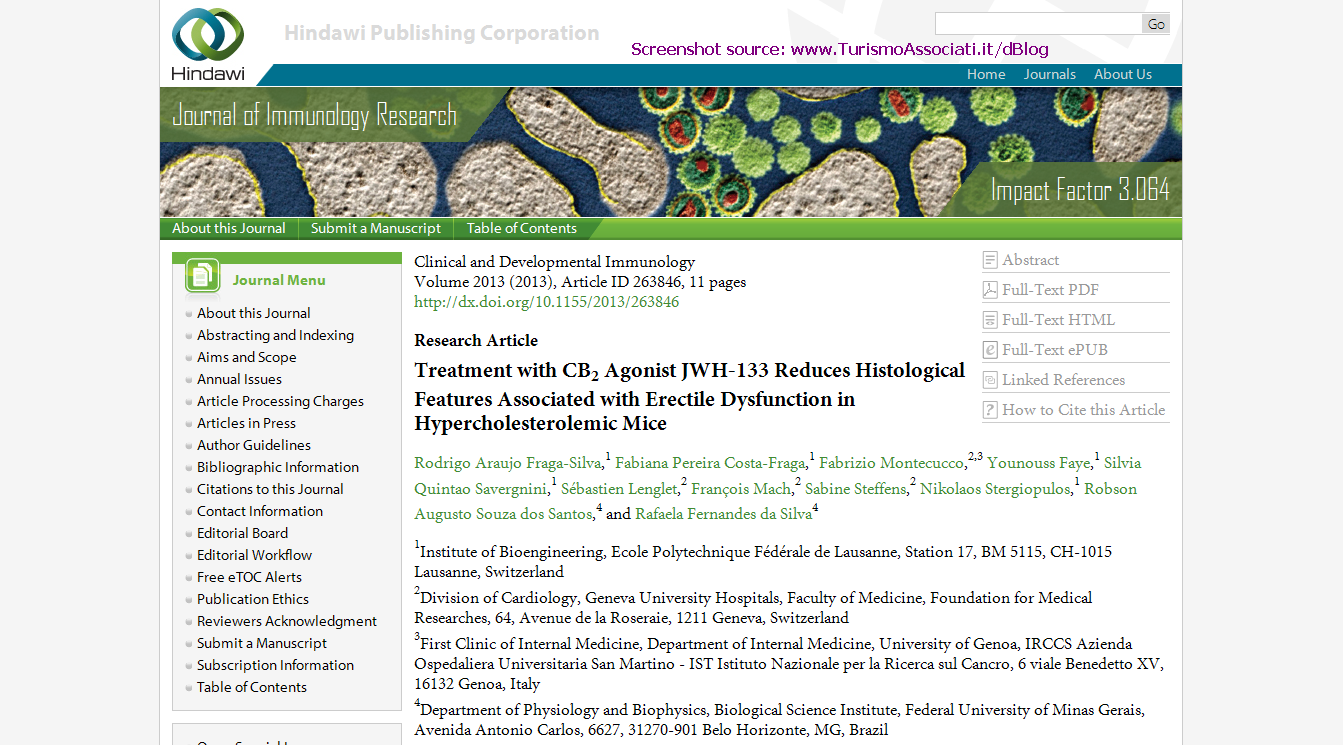
By targeting specific pathways related to marijuana, researchers from Switzerland were able to reduce erectile-related damage in mice with high cholesterol (hypercholesterolemia). These marijuana pathways, called CB2 receptors, are present in many parts of the body, including tissues of the penis.
"In summary, CB2 activation decreased histological features, which were associated with erectile dysfunction in hypercholesterolemic mice."
After three weeks of treatment, tissue samples taken from the mice showed lower levels of fibrosis (abnormal tissue build up) and other cholesterol-related injuries, compared to mice that were left untreated.
Though still in its early stages, the research is promising and helps shed light on the ongoing debate over marijuana and sexual function. Up till now, studies have mostly focused on marijuana's short-term effects, and have provided conflicting results.
The only research conducted in human subjects suggests that marijuana may have aphrodisiac-like effects. However, some pre-clinical evidence shows that another marijuana pathway, the CB1 receptor, may interfere with the ability to achieve an erection.
While the latest findings suggest that marijuana might offer long-term prevention against erectile dysfunction, the authors state that more research is needed to confirm the results.
The study received funding from the Brazilian Swiss Joint Research Program, the Swiss National Science Foundation, the Novartis Foundation and Conselho Nacional de Desenvolvimento Científico e Tecnológico (CNPQ)
Source: LeafScience
Published in Trends in Pharmacological Sciences, a team of experts from the National Institutes of Health (NIH), University of Calgary and The Rockefeller University summarized the current body of research on cannabis and anxiety.
As it turns out, despite marijuana's wide range of effects, relief from anxiety and stress happens to be the most commonly reported reason for using marijuana.
"Cannabis and its derivatives have profound effects on a wide variety of behavioral and neural functions, ranging from feeding and metabolism to pain and cognition. However, epidemiological studies have indicated that the most common self-reported reason for using cannabis is rooted in its ability to reduce feelings of stress, tension, and anxiety."
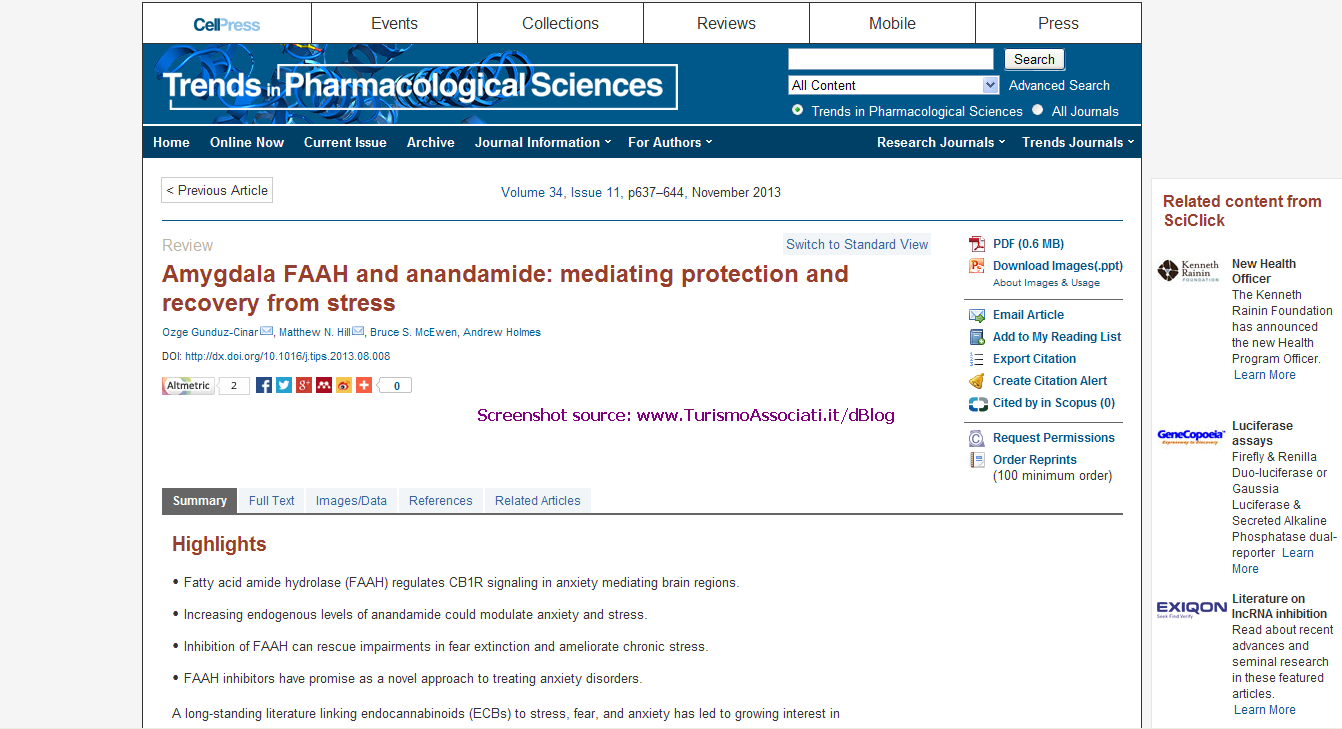
Studies involving THC also show that it "can reduce anxiety in patients with anxiety disorders," continue the authors. On the other hand, too high of a dose can have the opposite effect in certain people.
But while marijuana has long been regarded as an effective stress reliever, recent research has focused on the neurological activity responsible for this effect. What scientists now know is that marijuana acts on a system in the brain called the endocannabinoid system.
Interestingly, the authors also note evidence that suggests anxiety disorders could be caused by abnormalities of this biological system.
"The discovery of the ECB (endocannabinoid) system raised the possibility that ECBs (endocannabinoids) could be important modulators of anxiety, and might contribute to individual differences in anxious temperament and risk for anxiety disorders."
Among its various functions, the endocannabinoid system is believed to naturally regulate anxiety and stress levels. It does this through the release of chemicals that belong to the same class of chemicals found in marijuana: (endo)cannabinoids.
Though scientists have identified over 60 different cannabinoids in the cannabis plant, its main psychoactive ingredient, THC, is strikingly similar to one of the first endocannabinoids discovered in humans, anandamide.
By acting on the same pathways of the brain, both seem to hold promise as a treatment for stress and anxiety. So it's no surprise that people who suffer from excessive stress are finding relief in marijuana, a phenomenon that scientists call "self-medicating."
"Significant numbers of people may be self-medicating with cannabis in an attempt to reduce excessive anxiety."
But whether cannabis is the best way of targeting the endocannabinoid system is still up for debate.
In fact, the authors of the latest report argue that raising the brain's anandamide levels – by preventing its breakdown – may be a better therapeutic alternative, due to the "unwanted effects of cannabis (e.g. cognitive impairment, abuse liability)."
However, with no clinical trials of a drug that can do this, it may be a while until such an alternative is available.
Source: LeafScience
Using high doses of marijuana extract, prepared via methods outlined by well-known cannabis activist Rick Simpson, the patient experienced rapid reductions in leukemic cell counts.

Local doctors Yadvinder Singh, MD and Chamandeep Bali, ND detailed the case last month in the journal Case Reports in Oncology.
"Despite the nonstandardization of the medicines, the dose was readily titrated according to the biological response of the patient and produced a potentially life-saving response, namely, the drop in the leukemic blast cell count."
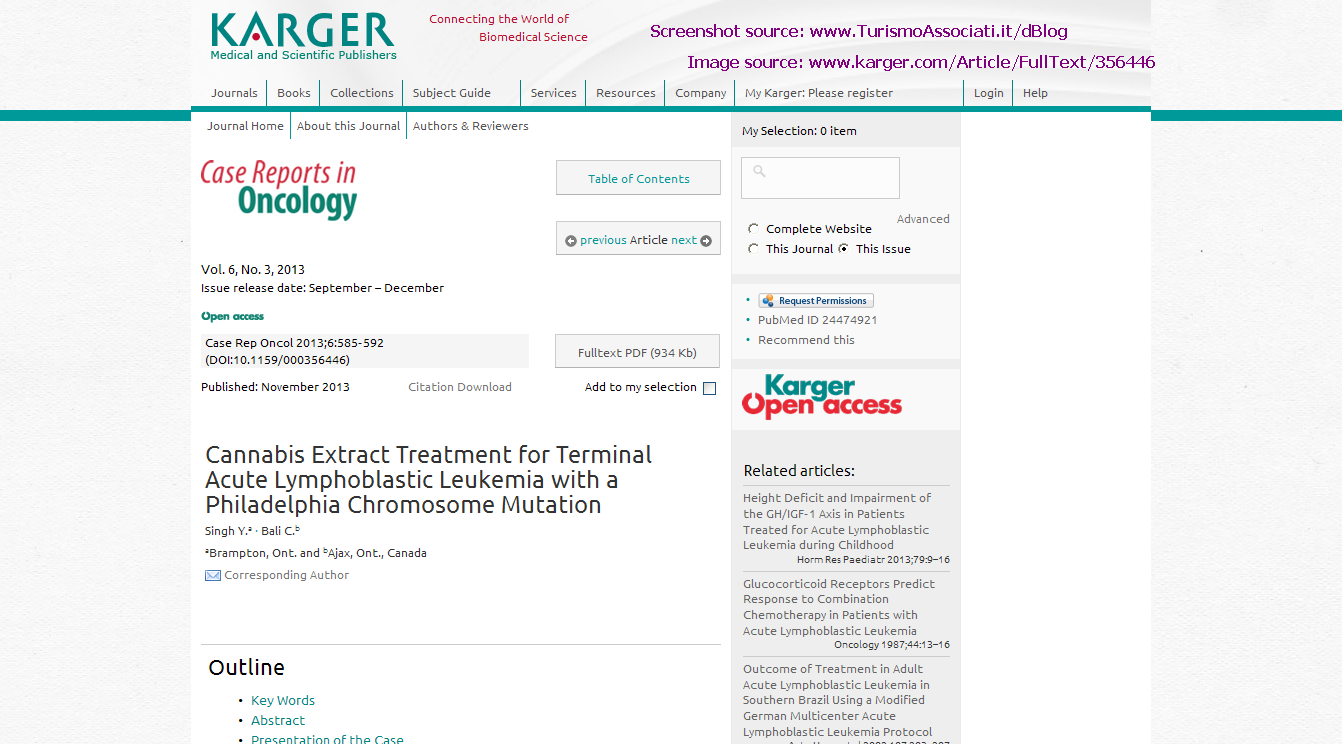
The patient, who was first diagnosed with acute lymphoblastic leukemia at the age of 14, eventually turned to high doses of cannabis extract after 34 months of traditional chemotherapy, surgery and radiation therapy treatments proved unsuccessful.
Although the patient passed away 11 weeks into marijuana treatment, her death was caused by severe intestinal bleeding, a common side-effect of chemotherapy.
On the other hand, after starting marijuana treatment, the doctors report that the patient experienced almost no side-effects, and became healthy enough to return home from her placement at a palliative care center.
"It must be noted that where our most advanced chemotherapeutic agents had failed to control the blast counts and had devastating side effects that ultimately resulted in the death of the patient, the cannabinoid therapy had no toxic side effects and only psychosomatic properties, with an increase in the patient's vitality."
While case reports on marijuana's anti-cancer effects are rare, the authors note that an abundance of pre-clinical studies support the potential of cannabis compounds to fight various cancers, including leukemia.
What's more, both research and the current case report suggest a dose-dependent effect, meaning that higher doses show stronger anti-cancer activity.
Unfortunately, despite the promise, progress in clinical settings has been slow.
"It goes without saying that much more research and, even more importantly, phase clinical trials need to be implemented to determine the benefits of such therapies. Laboratory analysis is critical to figure out the constituents/profiles/ratios of the vast cannabis strains that show the most favored properties for exerting possible anticancer effects."
Cannabis also appears to be safer and less toxic than traditional cancer therapies, according to the authors, who conclude: "It is tempting to speculate that, with integration of this care in a setting of full medical and laboratory support, a better outcome may indeed be achieved in the future."
Source: LeafScience
Now, for the first time, researchers have found that cannabis rich in CBD can slow the progress of colon cancer in live animal models.

Using a botanical extract made from high-CBD cannabis, researchers from Italy and the UK were able to reduce pre-cancerous lesions and tumor growth in mice with colon cancer.
The results, released last month in the journal Phytomedicine, also suggest that cannabis extract can selectively target colon cancer cells, while leaving healthy cells unharmed. Both CB1 and CB2 pathways seem to facilitate its effects.
"In conclusion, we have shown that CBD BDS (botanical drug substance) exerts beneficial actions in experimental models of colon cancer and antiproliferative CB1 and CB2 mediated effects in colorectal cancer cells."
The authors believe that the results could have "clinical relevance for the use of cannabis-based medicines in cancer patients," since current colon cancer treatments are "very toxic" and still "fail to prevent disease progression" in some patients.
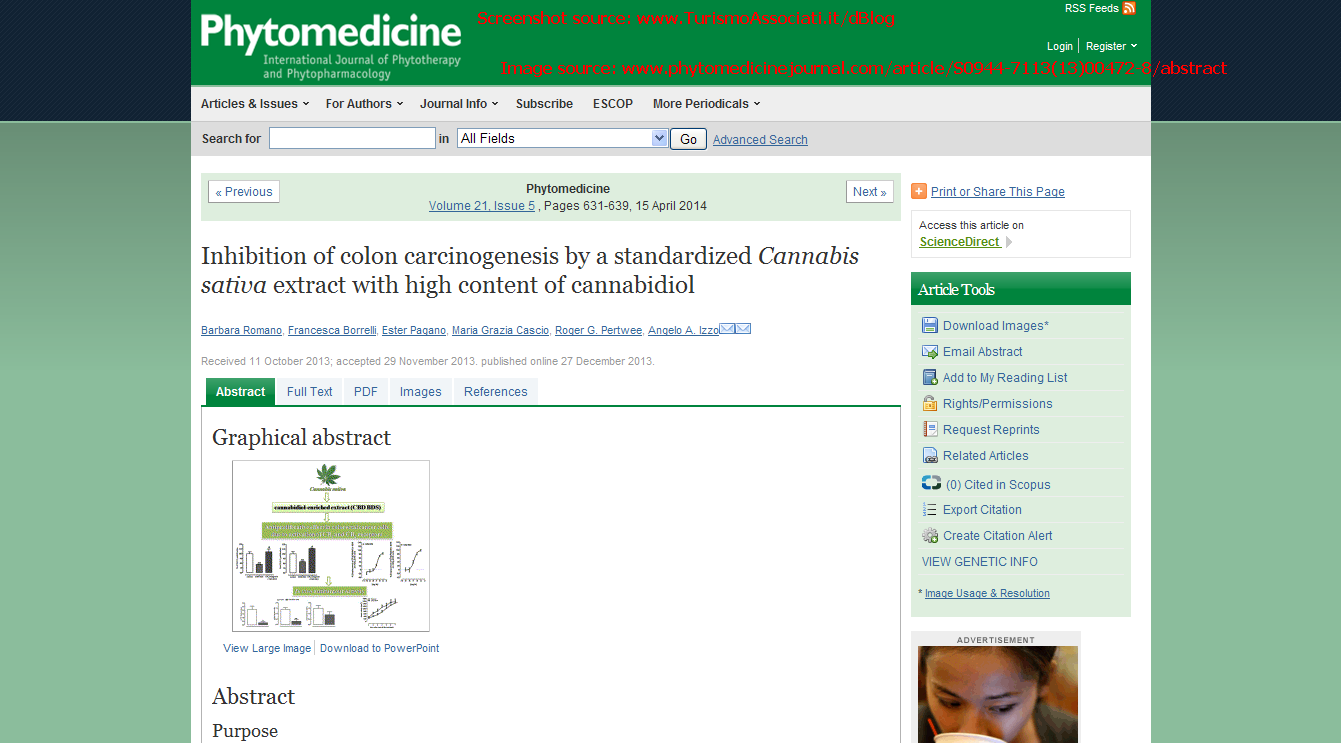
Screening strategies for colon cancer have so far failed to reduce disease incidence and mortality, they add.
In 2008, colon cancer, also known as colorectal cancer or bowel cancer, was diagnosed in over 1 million individuals and caused more than 600,000 deaths worldwide.
Researchers have also made progress in studying cannabis as a treatment for brain and breast cancers.
Besides the potential to directly treat cancer, cannabis-based medicine can be used to stimulate appetite, reduce nausea and relieve pain in patients with cancer.
The study was partially funded through grants from GW Pharmaceuticals
Source: LeafScience
Marijuana has never been linked to an overdose death, and new findings may explain why.
Published in the journal Science, French researchers have identified a natural hormone that reverses marijuana intoxication in rats.
In an interview with WebMD, study author Dr. Pier Vincenzo Piazza explained that rats exposed to THC showed a dramatic rise in a brain hormone called pregnenolone. The hormone also seemed to prevent marijuana's intoxicating effects.
"When the brain is stimulated by high doses of THC, it produces pregnenolone – a 3,000 percent increase – that inhibits the effects of THC."
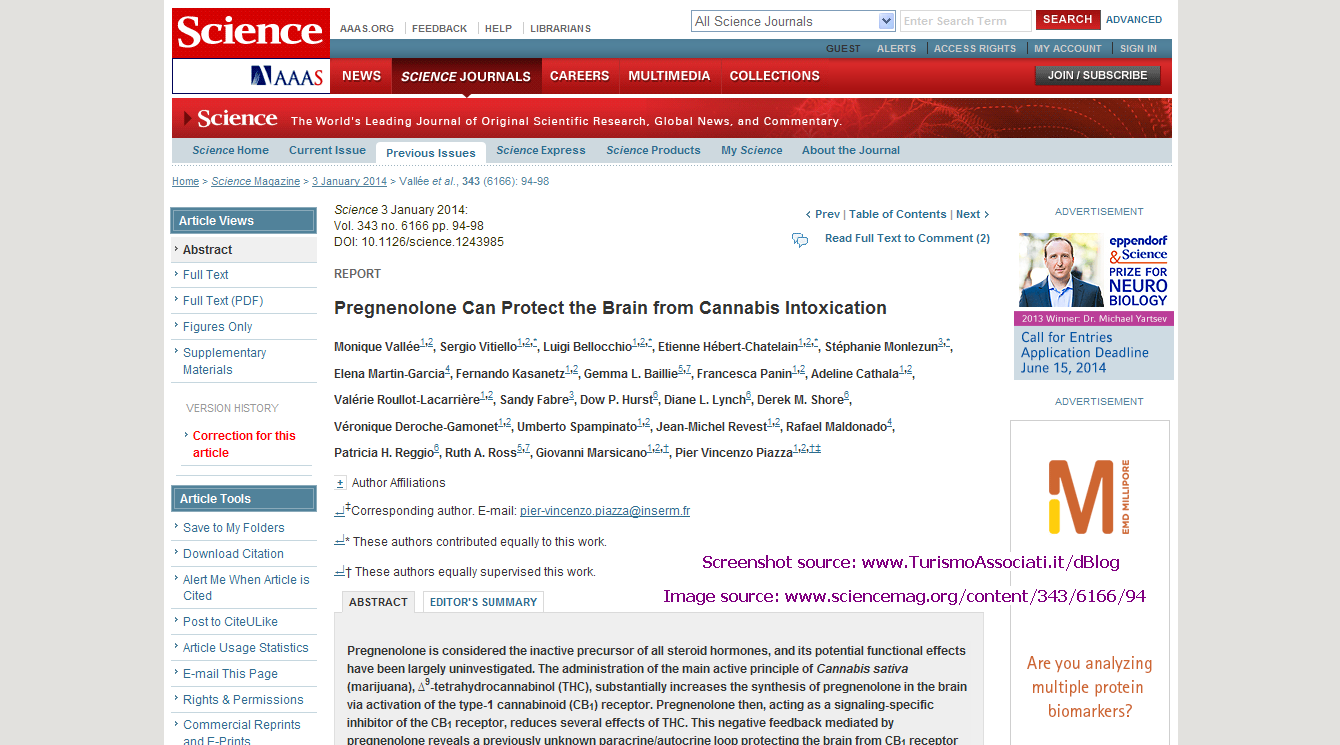
But the study, originally meant for developing a treatment for cannabis addiction, has been met with different interpretations.
While the authors say that an addiction treatment based on pregnenolone could soon be tested in humans, others believe the study explains how the brain protects itself from a marijuana overdose.
By binding to cannabinoid receptors, THC triggers the release of pregnenolone, which in turn weakens THC's action on the receptors – a negative feedback loop that could prevent marijuana users from getting too high.
Considering the low rates of cannabis addiction, Mitch Earleywine, a professor of psychology at the University at Albany, SUNY, adds that a drug for cannabis abuse may not even be necessary.
"Although the authors pitch this as a novel way to treat cannabis abuse, it's actually a superb – if partial – explanation for why cannabis appears to have no potential lethal dose and why its capacity for creating addiction is more like caffeine's than that of any illicit drug."
Scientists have been studying pregnenolone since the 1940s for conditions like stress and arthritis, but only recently has the hormone caught the attention of cannabis researchers.
While pregnenolone pills are sold as supplements, Dr. Piazza and his team are now working on how to deliver the hormone in higher doses.
Source: WebMD via LeafScience
The push to study cannabidiol, a non-psychoactive cannabis compound, as a treatment for children with severe epilepsy has finally led to clinical trials. Approved by the FDA, the studies will take place at five medical centers across the U.S., including the University of California, San Francisco (UCSF).
But contrary to earlier reports, researchers say only this month are studies on Epidiolex, a purified form of CBD, actually beginning.
The problem, as UCSF researcher Joseph Sullivan explained to KRCB Radio, is that federal law treats CBD the same way as all forms of marijuana, presenting significant legal barriers to medical research.
"There is no psychoactive or abuse potential of pure cannabidiol, yet it's treated as if it's any other type of marijuana with high THC levels."
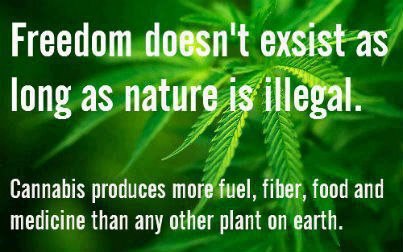
Because of this, Sullivan and his colleagues at UCSF had to satisfy strict requirements, such as undergoing extensive background checks and purchasing a $3,000 safe, in order to start testing the drug.
And while medical marijuana advocates have shown support for the development, Dr. Sullivan seems to think researchers would be better off if they hadn't.
"Because of the current political climate – although it is changing – it tarnishes the effort to align it with medical marijuana, as opposed to just saying that this is cannabidiol. I think it's not positioning us well to get this medication out into the appropriate studies, so we understand what role it can play for us."
But considering how long studies on CBD have existed, it's uncertain whether progress would've been made if parents of epileptic children hadn't drawn attention to the issue.
Parents' Push
Since 2012, major media sources such as CNN have reported success stories of parents of severely epileptic children, who found CBD-rich cannabis to be the only treatment that worked.
What's more, according to another member of the UCSF team, Dr. Catherine Jacobson, the company behind Epidiolex hadn't planned on testing the drug for epilepsy in the first place.
It wasn't until a parent contacted GW Pharmaceuticals seeking an alternative to CBD products available at local dispensaries, Dr. Jacobson told Leaf Science, that the company began to consider Epidiolex for treating seizures.
"They got interested in the pediatric epilepsy population because one parent in California got fed up with finding cannabidiol-enriched cannabis from dispensaries. From pot growers. She got fed up because it was impossible to find. It was a very inaccurate method for treating a child with severe seizures."
Before joining the team at UCSF, Dr. Jacobson worked at Stanford University, where she compiled data from parents who had tried CBD-rich marijuana as a treatment for their children.
Published last year, her study showed that most parents (83% of those surveyed) found CBD-rich marijuana effective at reducing seizure frequency, even when other drugs couldn't.
But despite the positive findings, Dr. Jacobson agrees with her colleague's message that more research is needed in order to determine the true promise of CBD.
While she believes CBD will work for some, Dr. Jacobson told KRCB that the "hype" around CBD-rich marijuana may not be accurate, and it's unlikely that cannabidiol can cure all forms of epilepsy.
Source: KRCB via LeafScience
University of Arizona Cancer Center member Dr. Mark Pagel will receive a $2 million grant from the National Institutes of Health to study the effectiveness of personalized baking soda cancer treatment for breast cancer. In other words, clinical trials on the use of oral baking soda (sodium bicarbonate) for breast cancer treatments are about to start![1] Obviously there are people in the know who have understood that sodium bicarbonate, that same stuff that can save a person’s life in the emergency room in a heartbeat, is a primary cancer treatment option of the safest and most effective kind.

Of course I feel vindicated for everything I wrote in Sodium Bicarbonate – Rich Man's Poor Man's Cancer Treatment, which still stands as the only full medical review on the subject of using simple baking soda in the practice of medicine. When taken orally with water, especially water with high magnesium content, and when used transdermally in medicinal baths, sodium bicarbonate becomes a first-line medicinal for the treatment of cancer, kidney disease, diabetes, influenza and even the common cold. It is also a powerful buffer against radiation exposure, so everyone should be up to speed on its use. Everybody’s physiology is under heavy nuclear attack from strong radioactive winds that are circling the northern hemisphere.
Actually it is no surprise that a University of Arizona researcher received this grant because there has been cancer research going on for years there. Dr. Robert J. Gillies and his colleagues have already demonstrated that pre-treatment of mice with baking soda results in the alkalinization of the area around tumors. The same researchers reported that bicarbonate increases tumor pH and also inhibits spontaneous metastases in mice with breast cancer.[2] It also reduces the rate of lymph node involvement.
I recently published about fungal infections, and breast cancer has been found to be associated with increased frequency of mold-fermented cheese consumption.[3] Fungi produce toxic metabolites called mycotoxins[4] that can cause cancer. Aflatoxin is a mycotoxin with carcinogenic potency that is found in inferior peanut butter and other nut and dairy products. Researchers in 1993 examined human breast cancer tissue and found significant carcinogenic aflatoxin within the cancer tissue implicating aflatoxin and thus fungus as a cause of breast cancer.[5]

The pH level of our internal fluids affects every cell in our body. Chronic over-acidity corrodes body tissue, and if left unchecked will interrupt all cellular activities and functions. In other words, over-acidity interferes with life itself. It is at the root of cancer.
Sodium bicarbonate medical treatments are the time honored method to "speed up" the return of the body’s bicarbonate levels to normal. Sodium bicarbonate happens to be one of our most useful medicines as it treats the basic acid-alkaline axis of human physiology.
Baking Soda and PH Medicine
The pH of our tissues and body fluids is crucial and central because it affects and mirrors the state of our health or our inner cleanliness. The closer the pH is to 7.35-7.45, the higher our level of health and wellbeing. Staying within this range dramatically increases our ability to resist acute illnesses like colds and flues as well as the onset of cancer and other diseases. Keeping our pH within a healthy range also involves necessary lifestyle and dietary changes that will protect us over the long term while the use of sodium bicarbonate gives us a jump-start toward increased alkalinity.
The pH scale is like a thermometer showing increases and decreases in the acid and alkaline content of fluids. Deviations above or below a 7.35-7.45 pH range in the tightly controlled blood can signal potentially serious and dangerous symptoms or states of disease. When the body can no longer effectively neutralize and eliminate the acids, it relocates them within the body's extra-cellular fluids and connective tissue cells directly compromising cellular integrity. Conversely when the body becomes too alkaline from too much bicarbonate in the blood, metabolic alkalosis occurs, which can lead to severe consequences if not corrected quickly.[6]
Jon Barron presents a way of looking at pH that opens up one of the major benefits of alkaline water:
Hydrogen ions tie up oxygen. That means that the more acid a liquid is, the less available the oxygen in it. Every cell in our body requires oxygen for life and to maintain optimum health. Combine that with what we know about hydrogen ions and we see that the more acid the blood (the lower its pH), the less oxygen is available for use by the cells. Without going into a discussion of the chemistry involved, just understand that it's the same mechanism involved when acid rain "kills" a lake. The fish literally suffocate to death because the acid in the lake "binds up" all of the available oxygen. It’s not that the oxygen has gone anywhere; it's just no longer available. Conversely, if you raise the pH of the lake (make it more alkaline), oxygen is now available and the lake comes back to life. Incidentally, it's worth noting that cancer is related to an acid environment (lack of oxygen)—the higher the pH (the more oxygen present in the cells of the body), the harder it is for cancer to thrive.
Understanding this is important for two reasons: (1) it reveals one of the primary benefits of alkaline water—more "available" oxygen in the system and (2) it explains why alkaline water helps fight cancer.
The ocean, the mother of all life, has an average pH of about 8.1. The ideal pH for blood sits at about 7.4, slightly alkaline—not acidic.
- Jon Barron
Barron concludes:
If you’re eating well and living cleanly, then yes, you want to drink water with a naturally occurring pH only slightly above neutral. However, if you are eating the typical Western diet, high in meat, grains, sodas, and sugars that acidify the body, then you have a different problem. Your pH balance is now so far out of normal that you must go beyond normal in the other direction to counter it. My recommendation for daily drinking water pH is about 7.5-8—depending on how acid forming your diet is. Long-term consumption of higher pH water should be reserved for special circumstances. The most famous mountain waters in the world, waters renowned for their healing properties, are highly alkaline. I’m referring to the waters coming down from the Himalayas, and specifically to the waters of the Hunza Valley, which have a pH that runs between 9 and 11.
One does not have to be a doctor to practice pH medicine. Every practitioner of the healing arts and every mother and father needs to understand how to use sodium bicarbonate. Bicarbonate deficiency is a real problem that deepens with age so it really does pay to understand and appreciate what baking soda is all about.
[1] Baking Soda Might Have Potential Against Cancer: http://digitaljournal.com/article/323645
[2] http://www.ncbi.nlm.nih.gov/pubmed/19276390
[3] One sample study is by Le, et al. (1986), in a French case-control study of 1,010 breast cancer cases and 1,950 controls with nonmalignant diseases, found that breast cancer was found to be associated with increased frequency of mold fermented cheese consumption.
[4] Going, et al. (1990) found that weddellite (calcium oxalate) crystals are present in calcifications found in the breast tissue of patients with breast cancer. Calcium oxalate crystals are formed when calcium binds with oxalic acid. Oxalic acid is a mycotoxin that can be produced by a number of different fungal species. Some fungi produce such large amounts of oxalic acid that they are used for commercial production of chemicals. Aspergillus niger fungal infection in human lungs produces large amounts of oxalic acid.
[5] Researchers examined human DNA from a variety of tissues and organs to identify and quantify aflatoxin DNA-adducts. Such adducts are considered to be proof of the mycotoxin’s presence in a particular tissue.Their finding? "Tumor tissues had higher aflatoxin-adduct levels than did normal tissue from the same individual."
[6] http://www.nlm.nih.gov/medlineplus/ency/article/001183.htm
Source: drsircus
Marijuana's active ingredient is a chemical called THC, which is thought to trigger psychosis in certain individuals. However, research shows that another compound in marijuana called CBD (cannabidiol) may counteract THC's effect, and could even have antipsychotic properties of its own.

In the latest study, published in the journal Neuropsychopharmacology (second LINK HERE - TA note), Dutch and British researchers reviewed more than 66 past studies on CBD and psychosis, and concluded that the compound offers a number of advantages over current drugs.
"Given the high tolerability and superior cost-effectiveness, CBD may prove to be an attractive alternative to current antipsychotic treatment."

The authors point out that CBD, unlike a vast majority of medicines, appears to have no noticeable side effects and no lethal dose. Several lines of evidence, including animal and human studies, also support its effectiveness as an antipsychotic medicine.
One of the most promising studies was published in 2012. The study involved 39 people with schizophrenia, 20 who were given CBD and 19 who were given the antipsychotic drug amisulpride.
At the end of the four-week trial,
those who received CBD showed the same levels of improvement as those who received amisulpride. But more importantly, CBD did not cause the hormonal and weight imbalances that amisulpride did.
"The results were amazing," said Daniel Piomelli, Ph.D., a professor of pharmacology at the University of California-Irvine who co-authored the study.
"Not only was (CBD) as effective as standard antipsychotics, but it was also essentially free of the typical side effects seen with antipsychotic drugs."
Unfortunately, despite raising excitement among others in the field, Dr. Piomelli's findings have yet to be followed up. According to PsychCentral, barriers include CBD's relationship to marijuana and the fact that it is a naturally-occurring compound, which makes it harder to patent as a new drug.
The authors of the latest study say that larger trials are necessary in order to bring the medicine to patients.
On the other hand, to get around the patenting issue, they note that identifying the source of CBD's antipsychotic properties "could also lead to the design of new synthetic agents" that mimic its benefits.
The study received funding from the Netherlands Organization for Scientific Research
Source: LeafScience
The use of marijuana as a medicine remains controversial, yet marijuana's active ingredient is regularly prescribed in both Canada and the U.S.
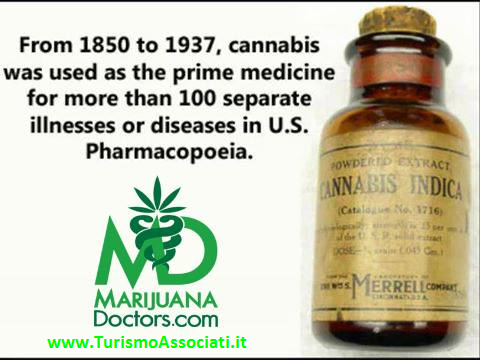
In fact, pills that contain THC, like Marinol (dronabinol) and Cesamet (nabilone), are often recommended as substitutes for marijuana.
But while it's easy to think of the treatments as equal, research highlights some important differences.
Time of Onset
A study conducted last year at the New York State Psychiatric Institute was the first ever to compare a THC pill, dronabinol, with smoked marijuana for managing pain.
In the study, smoking a joint took full effect within 15 minutes. Dronabinol, on the other hand, took 60-90 minutes to reach its peak.
As Florida physician Dr. Heather Auld points out in a recent article, a shorter time of onset is better for pain patients.
Duration of Effect
While marijuana and dronabinol performed about the same in pain reduction, the study found dronabinol's effect to last longer.
In this case, experts say a longer-acting treatment is preferable.
Dose Flexibility
The biggest advantage of smoking marijuana is the ability for patients to self-adjust dose. Due to the shorter time of onset, patients can easily adjust dosing by taking additional puffs when necessary.
On the other hand, the delay in onset of THC pills, combined with their extended action, makes it difficult and dangerous for patients to self-adjust dose.
Studies show that both smoked marijuana and dronabinol suffer from inconsistent bioavailability, which also makes it difficult for doctors to predict dosing. This makes the flexibility offered by smoking even more beneficial.
Also, while it might be inconvenient to roll a joint every couple hours, vaporizers are widely preferred by doctors, and provide an easier way for patients to take marijuana throughout the day.
Side Effects
A study concluded that patients get just as high from taking dronabinol as they do from smoking a joint.
On the other hand, some believe dronabinol's delay in onset could make it less subject to abuse.
Source: LeafScience
Published in the American Journal of Public Health, a group of economics researchers found that medical marijuana laws led to a sharp drop in suicide rates among young men.
The results seem to support the belief that marijuana can be used to cope with stressful life events, says study co-author Daniel Rees, PhD, professor of economics at the University of Colorado Denver.
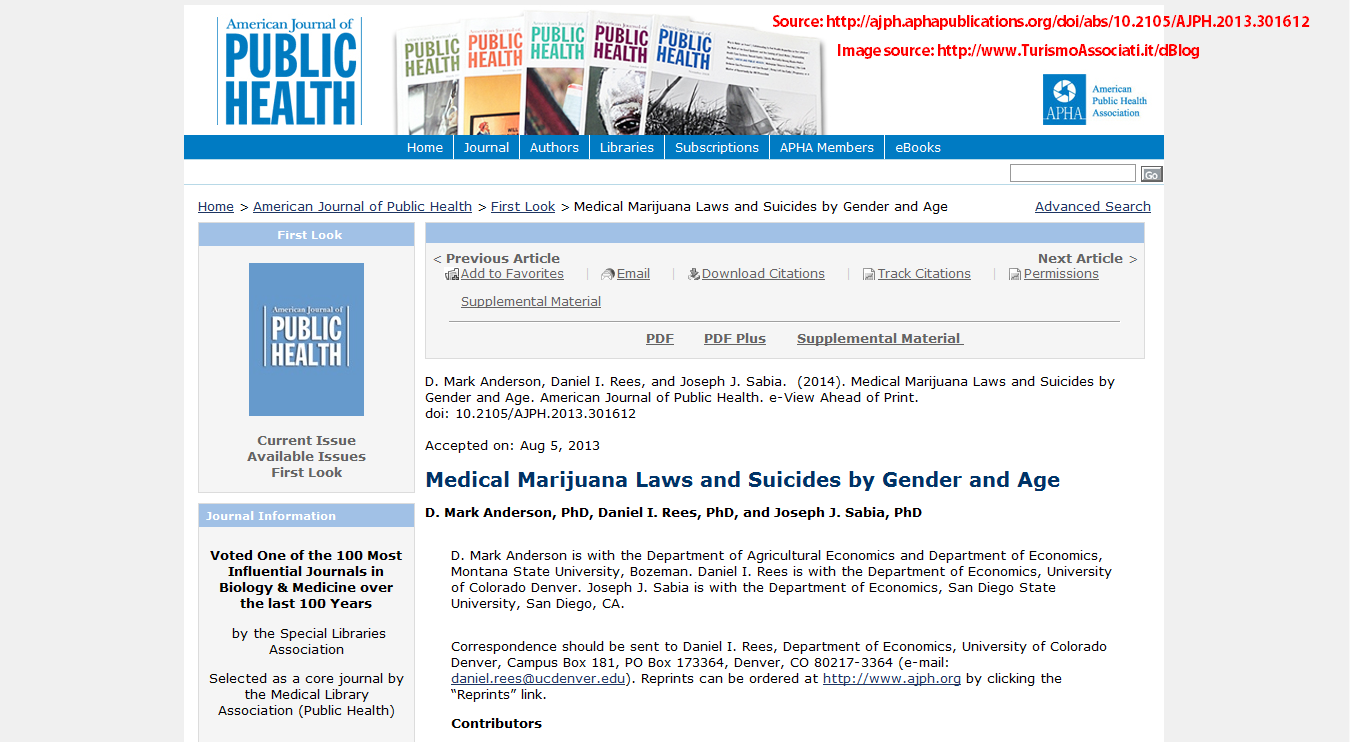
"In keeping with what advocates of medical marijuana would argue, that is, if you're depressed, if you have to cope with a stressful situation, marijuana actually helps."
Rees notes that some research suggests marijuana works as an anti-depressant, but the evidence isn't conclusive. On the other hand, medical marijuana laws have also been linked to less alcohol consumption – particularly among young men.
Less alcohol consumption following medical marijuana legalization could also explain the drop in suicide rates, he says.
But the study was the first time researchers have looked at medical marijuana laws and suicide rates. Rees believes more research needs to be done to be sure.
"The relationship really does seem to exist. But we don't have a lot to say about mechanism."
Rees, along with co-authors D. Mark Anderson of Montana State University and Joseph Sabia of San Diego State University, compared changes in annual suicide rates between 1990-2007 of states that legalized medical marijuana and states that did not.
Suicide rates seemed to decline overall among the 12 states that passed laws during this period. But the only statistically significant decrease was in men 20-39 years old.
The team's previous research has also shown a strong correlation between medical marijuana laws and reduced traffic fatalities.
No sources of funding were reported
Source: LeafScience
|